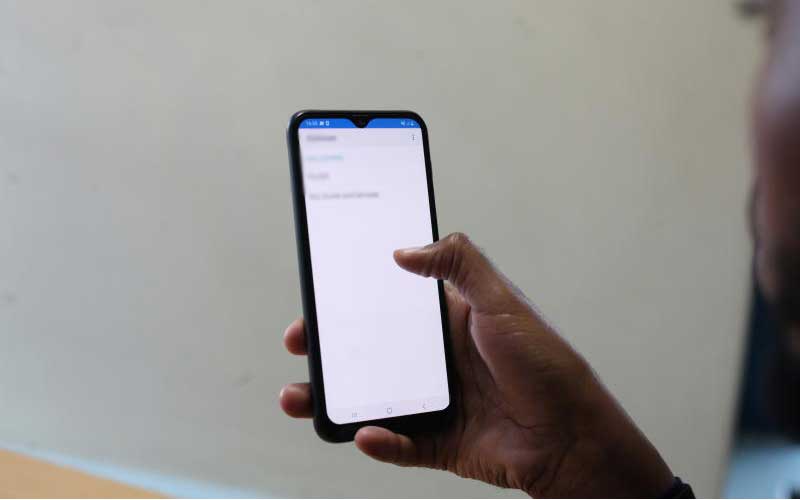
Millions of Kenyans can now access microloans within minutes and consistently build up their credit history. This empowers financial inclusion and opens the doors to larger working capital facilities from other financial institutions
Close to a decade ago, before the country embraced digital lending, for those few lucky individuals or small business owners that had a banking relationship, it took an average of three weeks and lots of paperwork changing multiple hands across banking halls before a lending decision was made. Digital credit is a major leap that has opened us up to the benefits of automated lending to households, businesses and the general economy.
The Credit Information Sharing (CIS) system is one of the cornerstones of financial inclusion in Kenya and has made it easier for borrowers to access additional growth credit. It is a testament to progress that a lender can use information from a credit bureau score and digital footprint to make superior lending decisions. This development has also fostered economic growth and helped lower inequality in the country.
Quick loans
Improved credit rating supported by the CIS system has over the last couple of years allowed digital lenders like M-Shwari, Tala or Zenka to provide necessary funding to small businesses requiring quick short-term loans to thrive, and shield homes from emergency shocks that could potentially slide families deeper into poverty.
Digital lenders have bridged a gap in offering much-needed credit to small business owners who could not access credit because they lacked a credit score or banking history. Year after year, mobile money deployment has grown faster than any other channel to mirror the increased role of the digitisation of financial services.
In 2019, Central Bank of Kenya, in a draft Kenya Banking Sector Charter, compelled commercial banks to increase loans to small businesses by 20 per cent.
“Each institution to evaluate its existing processes to promote lending to MSMEs (Micro, Small and Medium Enterprises), as well as document the initiatives that the institution is undertaking to promote access to finance for MSMEs,’’ the charter read.
According to a study on SMEs competitiveness by the International Trade Centre, Ministry of Trade and Kenya National Chamber of Commerce and Industry released in September last year shows that 33 per cent small traders avoid commercial bank loans despite their need for credit. SMEs represented the high growth in employment creation, having scooped 83.6 per cent of the 846,000 jobs created across 2018 as per provisional data from the Kenya National Bureau of Statistics.
You can attest that it is now taking Kenyans a few minutes to access credit at their own comfort; many people no longer need to travel or physically present paperwork. With just a tap on your smartphone, you are able to key in crucial data points that allow lenders to rate your creditworthiness.
According to the Central Bank of Kenya, there are more than 300 million positive transaction records (loans that have been fully repaid), showing a huge population of Kenyans, including those without physical bank accounts, have greatly benefited from improved access to credit over the years.
National scoring
Kenyans will enjoy even better ratings and access to more credit when it will be made obligatory for any lender to check a customer’s creditworthiness by pulling real-time credit reports about them from credit reference bureaus (CRBs) and by reporting their actual credit history to CRBs.
Therefore, adopting a national credit scoring system that is beneficial for all stakeholders of the financial industry is critical in advancing the next phase of credit rating in the country.
Stay informed. Subscribe to our newsletter
A 2018 phone survey conducted by FSD-Kenya in partnership with the Central Bank of Kenya, Kenya National Bureau of Statistics and CGAP shows that casual workers, dependents and formal employees borrow mostly for day-to-day needs.
Similarly, customers who run their own companies or farming operations mostly borrow for business purposes, while an entrepreneur borrowing for working capital is the single-most common use case for digital credit. Other important insights presented by these data sets is that digital credit appeals to younger people who are relatively well educated and are willing to use the money to start a business.
These sets of data are very critical to lenders to enhance innovativeness in coming up with solutions to ensure many more Kenyans are financially included and their living conditions improve for better and reduce unemployment rates in the country.
Mr Motanya is the CEO, Zenka Finance
 The Standard Group Plc is a
multi-media organization with investments in media platforms spanning newspaper
print operations, television, radio broadcasting, digital and online services. The
Standard Group is recognized as a leading multi-media house in Kenya with a key
influence in matters of national and international interest.
The Standard Group Plc is a
multi-media organization with investments in media platforms spanning newspaper
print operations, television, radio broadcasting, digital and online services. The
Standard Group is recognized as a leading multi-media house in Kenya with a key
influence in matters of national and international interest.
 The Standard Group Plc is a
multi-media organization with investments in media platforms spanning newspaper
print operations, television, radio broadcasting, digital and online services. The
Standard Group is recognized as a leading multi-media house in Kenya with a key
influence in matters of national and international interest.
The Standard Group Plc is a
multi-media organization with investments in media platforms spanning newspaper
print operations, television, radio broadcasting, digital and online services. The
Standard Group is recognized as a leading multi-media house in Kenya with a key
influence in matters of national and international interest.









